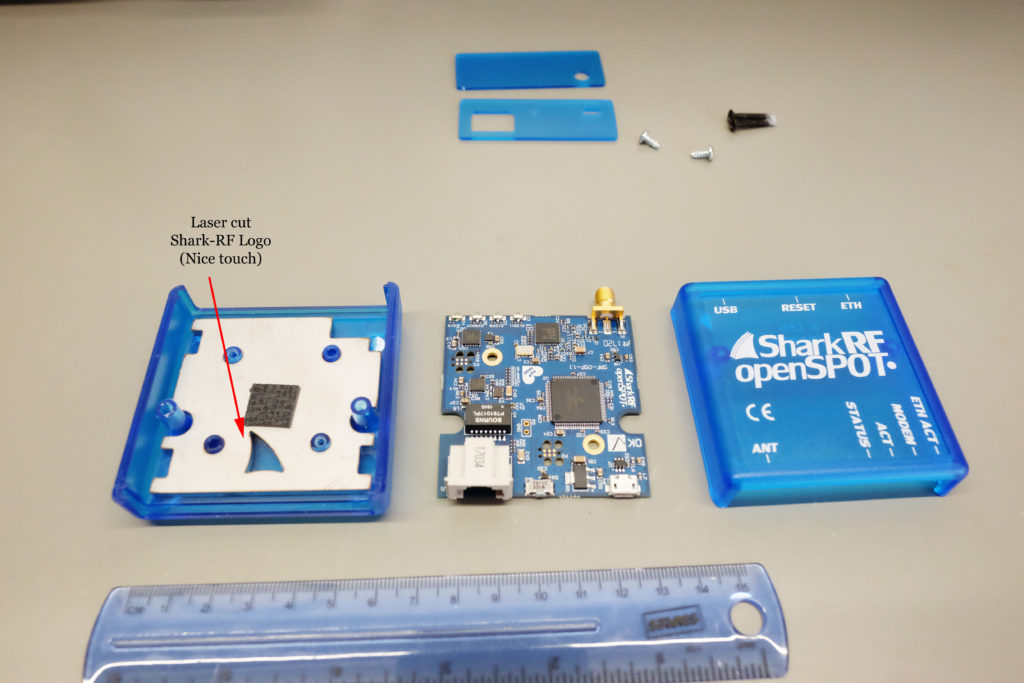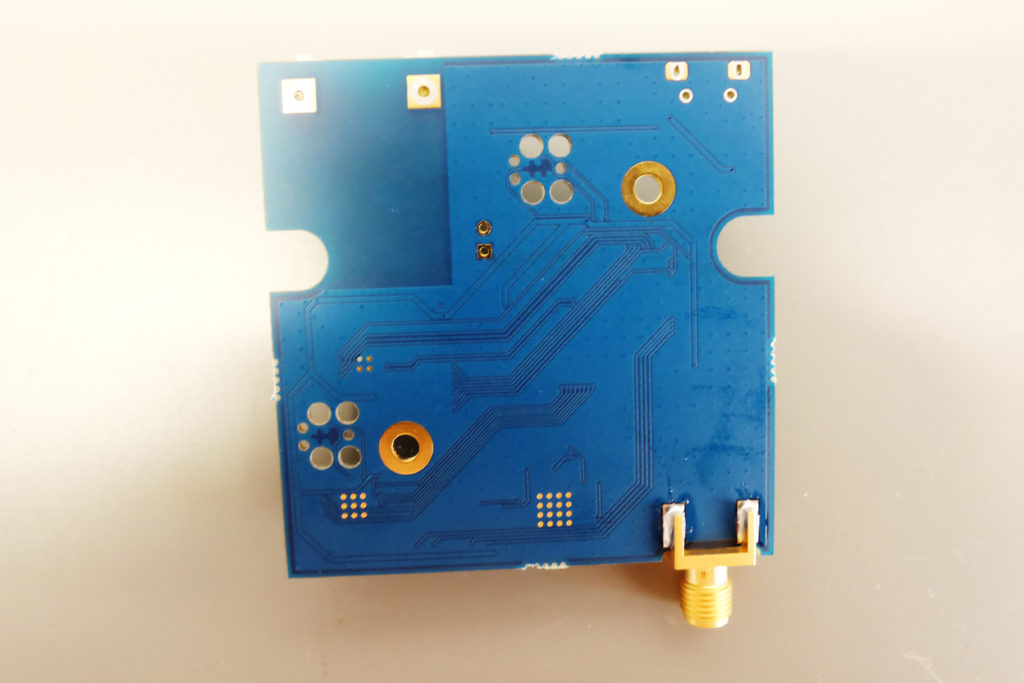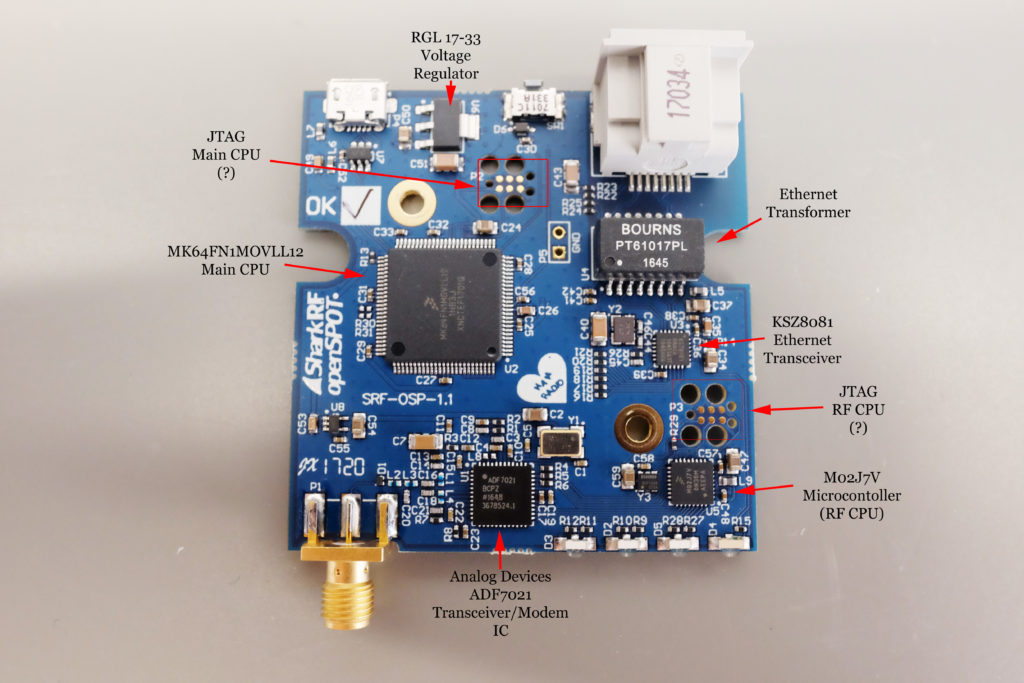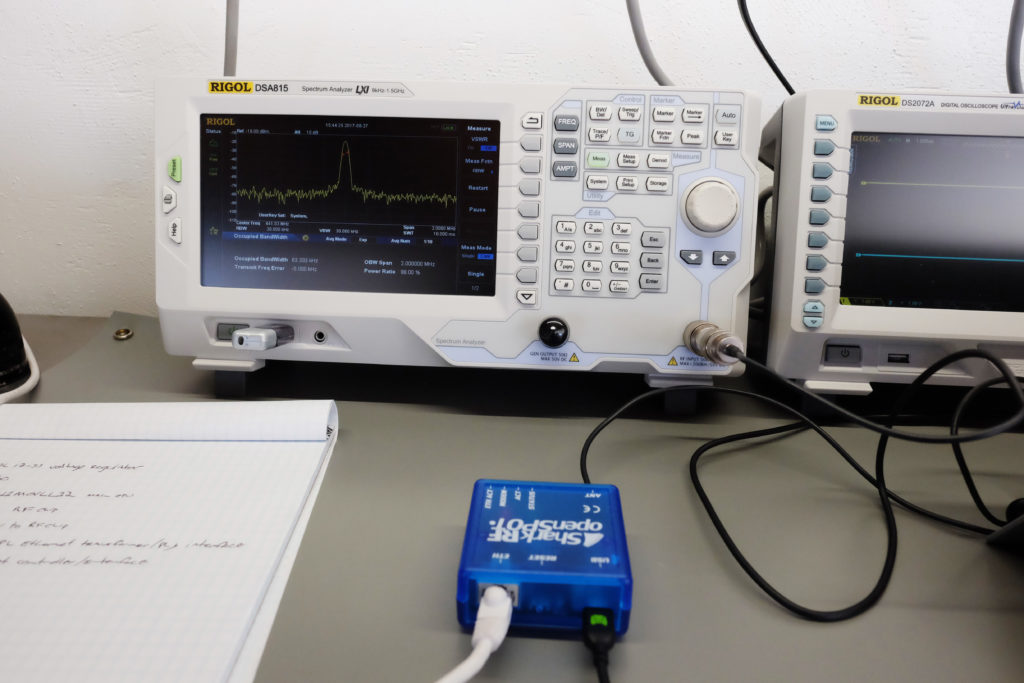The openspot by SharkRF is a digital radio gateway that allows you to use your d-star, dmr, or c4fm radio worldwide. What I liked about it the most is it is simple – plug it in, do some simple configuration via your browser, and you can start talking around the world on a little portable handheld radio. Afterward the success of that excitement, I decided to tear it down to see what it was using under the hood.
Disassembling the case is straight forward – just remove the screws. There’s a laser cut piece of metal in the case that seems to only be there to add mass.

The back side of the PCB isn’t anything special – mostly all ground plane with what look to be some test/probe ports.

The front side of the PCB has all the major components. I wasn’t motivated enough to go after the JTAG port. My high level guess is the main CPU provides the OS/UI/Network layer support, and the smaller microcontroller is providing a firmware interface to the Analog Devices RF chip.

Since I was at my bench, I hooked the openspot up to my spectrum analyzer and did a quick check to see if there were any spurs.

Overall it is a very nice product. Recommended.

